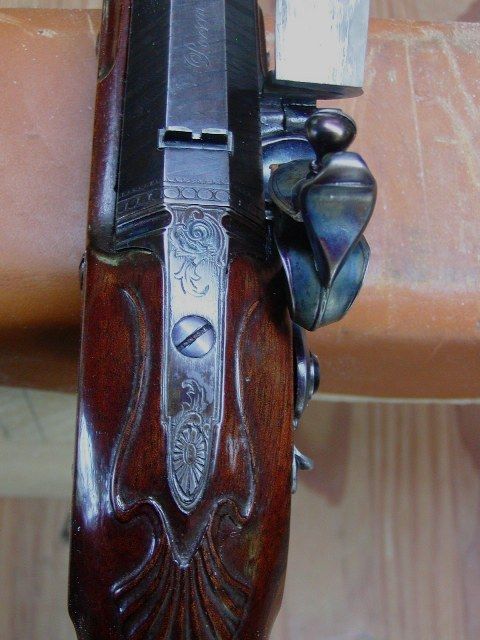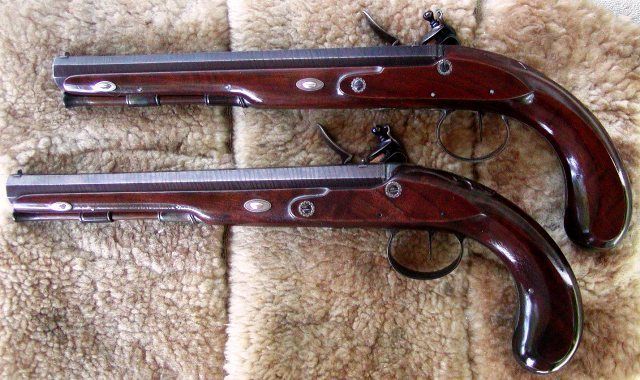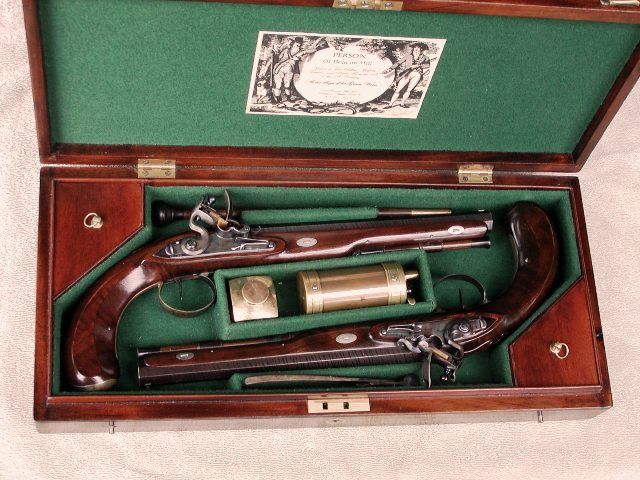I did a video discussing Dueling and the different black powder firearms used. Thought it might interest people here.
In case you were interested in the firearms i used in the video.
1.)French Heavy Dragoon- .54 caliber round ball with tow over & under ball wadding and 30 grains of FFF Goex.
2.) English(Style)target pistol-.32 caliber patched ball and Swiss pistol powder.(I only use Swiss in this gun.)
3.) 1851 colt pedersoli- .36 round ball, felt wad, and 22 grains of FFF Goex powder.
4.) Pennsylvania long rifle- .54 cal patched round ball with 60 grains of FF Goex powder.
I did make a slight mistake in that i used a short start with the rifle and that's not historical. I should have used a wood mallet or just my thumb. The flask is not a historical one but they did have similar ones.
[youtube]ExHSj3_dVPU[/youtube]
In case you were interested in the firearms i used in the video.
1.)French Heavy Dragoon- .54 caliber round ball with tow over & under ball wadding and 30 grains of FFF Goex.
2.) English(Style)target pistol-.32 caliber patched ball and Swiss pistol powder.(I only use Swiss in this gun.)
3.) 1851 colt pedersoli- .36 round ball, felt wad, and 22 grains of FFF Goex powder.
4.) Pennsylvania long rifle- .54 cal patched round ball with 60 grains of FF Goex powder.
I did make a slight mistake in that i used a short start with the rifle and that's not historical. I should have used a wood mallet or just my thumb. The flask is not a historical one but they did have similar ones.
[youtube]ExHSj3_dVPU[/youtube]








